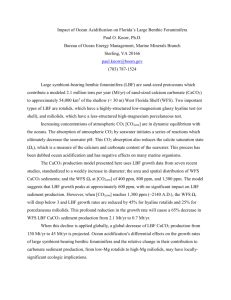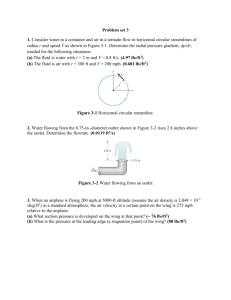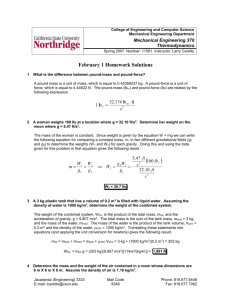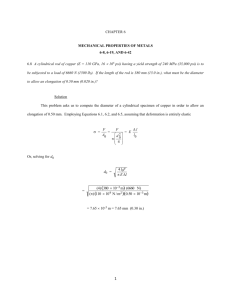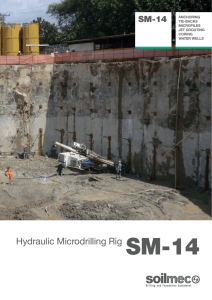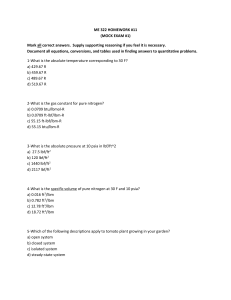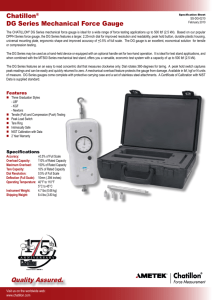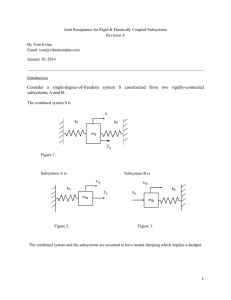Verification Questionnaire - Chavez Calibrations International, Inc.
advertisement
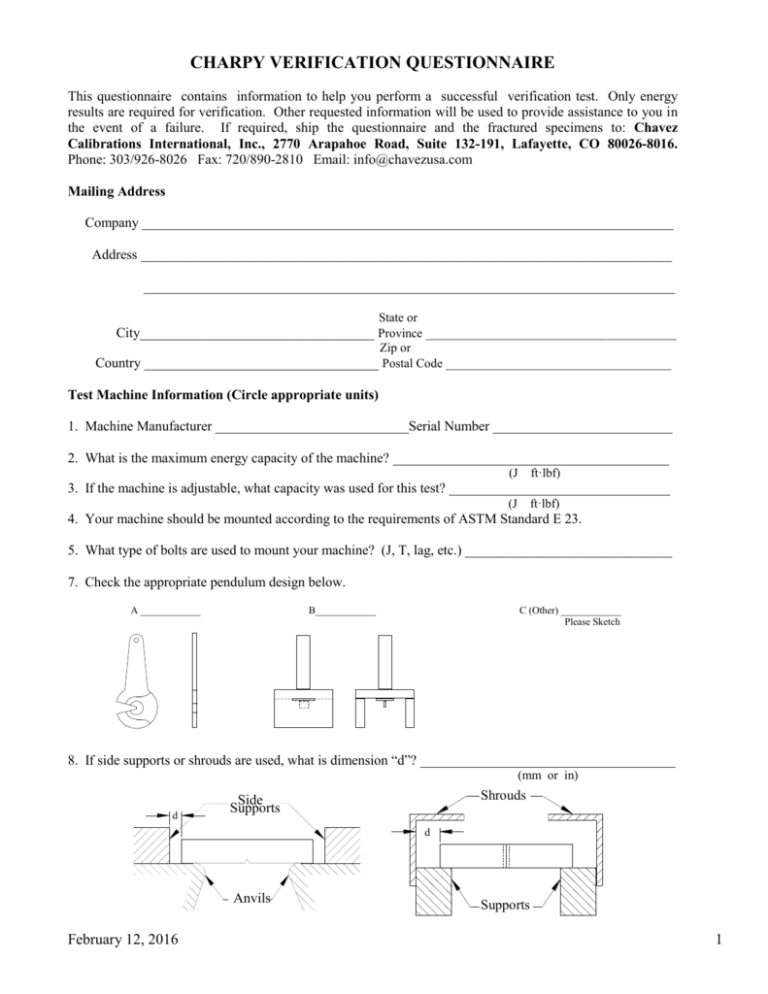
CHARPY VERIFICATION QUESTIONNAIRE This questionnaire contains information to help you perform a successful verification test. Only energy results are required for verification. Other requested information will be used to provide assistance to you in the event of a failure. If required, ship the questionnaire and the fractured specimens to: Chavez Calibrations International, Inc., 2770 Arapahoe Road, Suite 132-191, Lafayette, CO 80026-8016. Phone: 303/926-8026 Fax: 720/890-2810 Email: info@chavezusa.com Mailing Address Company _____________________________________________________________________________ Address _____________________________________________________________________________ _____________________________________________________________________________ State or City__________________________________ Province ________________________________________ Zip or Country __________________________________ Postal Code ____________________________________ Test Machine Information (Circle appropriate units) 1. Machine Manufacturer ____________________________Serial Number __________________________ 2. What is the maximum energy capacity of the machine? ________________________________________ (J ft·lbf) 3. If the machine is adjustable, what capacity was used for this test? ________________________________ (J ft·lbf) 4. Your machine should be mounted according to the requirements of ASTM Standard E 23. 5. What type of bolts are used to mount your machine? (J, T, lag, etc.) ______________________________ 7. Check the appropriate pendulum design below. A ____________ B____________ C (Other) ____________ Please Sketch 8. If side supports or shrouds are used, what is dimension “d”? _____________________________________ (mm or in) d Shrouds Side Supports d Anvils February 12, 2016 Supports 1 9. Your anvils and striker should conform to the dimensions below: Striker Specimen B Anvil R A a Anvil b Striker Specimen Support A W Anvils A: 80 (approximately) R: 1 0.05 mm (0.039 0.002 in.) W: 40 0.05 mm (1.574 0.002 in.) B: 90 10 min a: r: w: b: r w Striker 30 (approximately) 8 0.25 mm (0.315 0.010 in.) 4 mm (0.315 in.) 0.25 mm (0.010 in.) 10. If shrouds are used to contain broken specimens, the following requirements should apply: (A) The shrouds should have a minimum hardness of 45 HRC. (B) The thickness of the shrouds should be approximately 1.5 mm (0.06 in.). (C) Dimensions a, b, c, and d below should not exceed 1.5 mm (0.06 in.). (D) If dimension “d” in item 9 is more than 13 mm (0.5 in.), requirement (C) above does not apply. Pendulum c b a Shroud Anvil Shroud Anvil d Striker Spacer Specimen Supports Spacer 11. The striker should pass through the center of the anvils within 0.40 mm (0.016 in.). 12. With the pendulum in the free hanging position, engage the energy indicator. The indicator should read within 0.2% of the maximum energy range being used. 13. Windage and Friction Calculation Raise the pendulum to the latched position. Without a specimen in the machine, release the pendulum and permit it to swing 11 half swings. After the pendulum starts its 11th half swing, move the pointer to between 5 to 10 % of scale range capacity and record the dial reading (J ft·lbf). Divide this value by 11. Divide this value by the maximum machine scale range.____________ (J ft·lbf). Multiply this value by 100 to get the percentage. ______% This resulting friction and windage value loss should not exceed 0.4 %. February 12, 2016 2 14. With the specimen removed from your machine and the pendulum released from its latched position, what is the dial reading after one swing? ___________________________________________________ (J ft·lbf) This reading should be zero. If this reading is not zero and your machine is equipped with a compensated scale, please adjust the dial to read zero. If your machine is equipped with a non-compensated scale, please compensate the energy values for windage and friction by subtracting the windage and friction value calculated in item 15. 15. When was your machine last verified by the CCI or NIST? Date: _______________________________ 16. Is your machine equipped with a direct reading scale or a non-compensated scale? __________________ 17. Did you install new anvils immediately before this verification test? _________ (Carbide or Steel) 18. Did you install a new striker immediately before this verification test? _________ (Carbide or Steel) CALCULATE THE LOWER LIMIT OF THE USABLE RANGE OF YOUR MACHINE If your machine is equipped with a digital readout, what is the resolution? __________________ If your machine is equipped with an analog scale, what is the energy value between two adjacent marks on the scale at 15.0 J (11.0 ft·lbf)? What is the smallest discernable energy value readable between these marks? (This is normally ½ to ¼ of the difference between two adjacent marks on the scale.) Multiply this value by 25. (J ft·lbf) THIS IS THE LOWER USABLE LIMIT. YOU SHOULD NOT USE YOUR MACHINE TO PRODUCE DATA BELOW THIS ENERGY VALUE. Example 1: (Digital Readout) You have a machine with a capacity of 407.0 J (300.0 ft·lbf) and your machine is equipped with a digital readout. The resolution of the readout is 0.14 J (0.10 ft·lbf) at 15.0 J (11.0 ft·lbf). The lower limit of your machine is 25 times 0.14 J (0.10 ft·lbf) which is 3.50 J (2.60 ft·lbf). Example 2: (Analog Scale) You have a machine with a capacity of 407.0 J (300.0 ft·lbf) and your machine is equipped with an analog scale. The energy value between the marks at 15.0 J (11.0 ft·lbf) is 0.68 J (0.50 ft·lbf). You should be able to estimate to at least 0.34 J (0.25 ft·lbf). This is your resolution. Multiply by 25. The lower limit of your machine is 8.50 J (6.25 ft·lbf). TEST TEMPERATURE Test temperature for the low and high energy level specimens is -40 ± 1ºC (-40 ± 2ºF) for at least 10 minutes. 1. IMPORTANT: Test temperature for super-high energy level specimens is 21 ± 1oC (70 ± 2oF). We recommend that the specimens be held at test temperature for at least 10 minutes. WRAPPING AND SHIPPING INSTRUCTIONS Please wrap the specimens securely and coat the fracture surfaces only with light oil. Be sure to use the following statement for customs declaration. Contents include broken test bars manufactured in the U.S. being returned for evaluation and are valued at less than $10.00 USD. February 12, 2016 3 TEST RESULTS “CIRCLE ENERGY UNITS ” ASTM Standard E23 suggests that you read your machine dial to at least ¼ of a division. Joules Low Energy Series __________________________ Specimen Number Value Average Value ft·lbf kgf·m High Energy Series Super-High Energy Series __________________________ Specimen Number Value Average Value __________________________ Specimen Number Value Average Value Date of Test _______________________ (Month/ Day/ Year) ___________________________________________ Test Operator (PRINT) __________________________________________ Test Operator (SIGNATURE) Telephone ___________________________________ Fax___________________________________________ Email_________________________________________________________________________ ___________________________________________ ________________________________________________ Company Representative (PRINT) Company Representative (SIGNATURE) Telephone_______________________________________ Fax ______________________________________ Email________________________________________________________________ DCMC CERTIFICATION (ONLY if required by customer) ___________________________________________ DCMC Official (PRINT) February 12, 2016 _________________________________________ DCMC Official Signature and Seal 4

